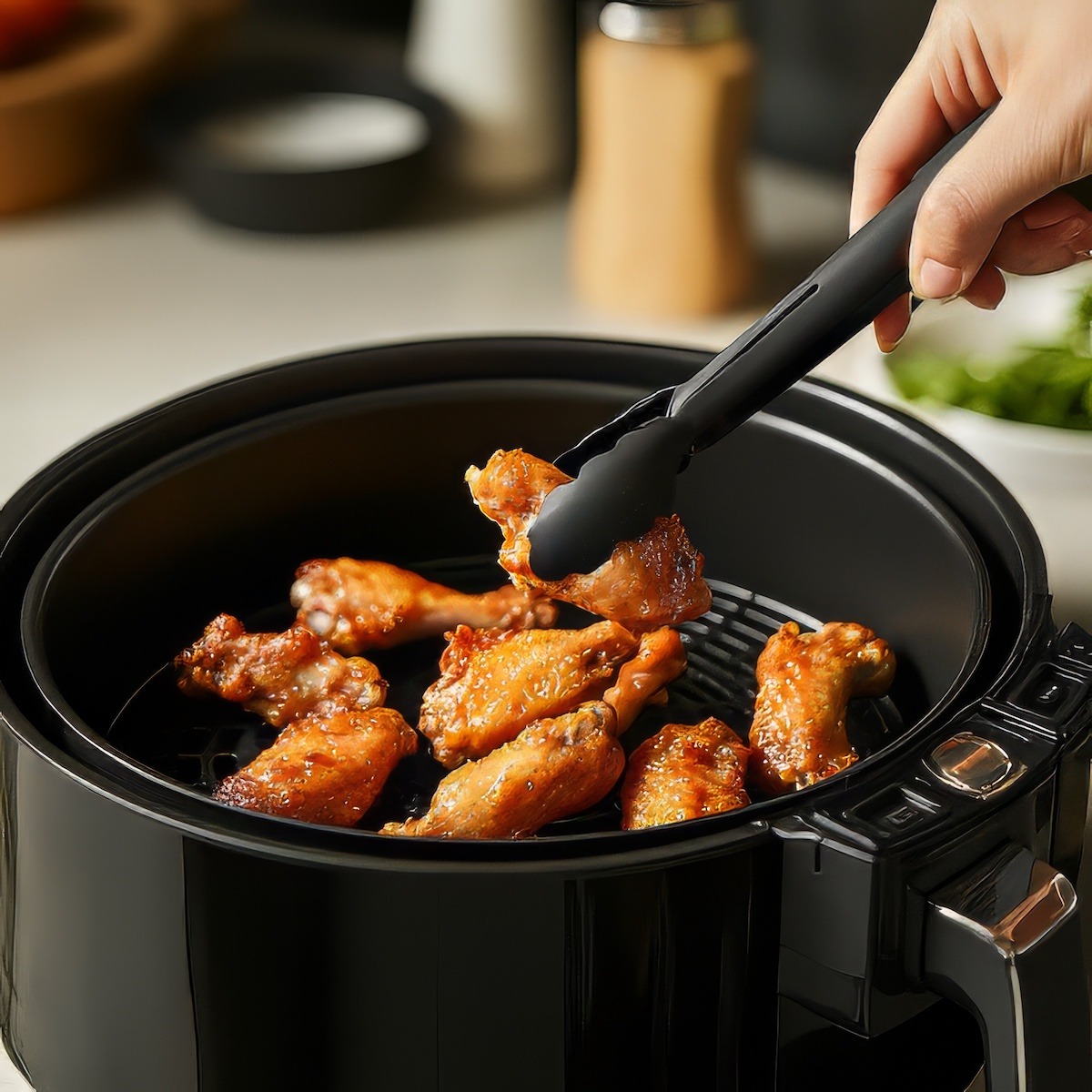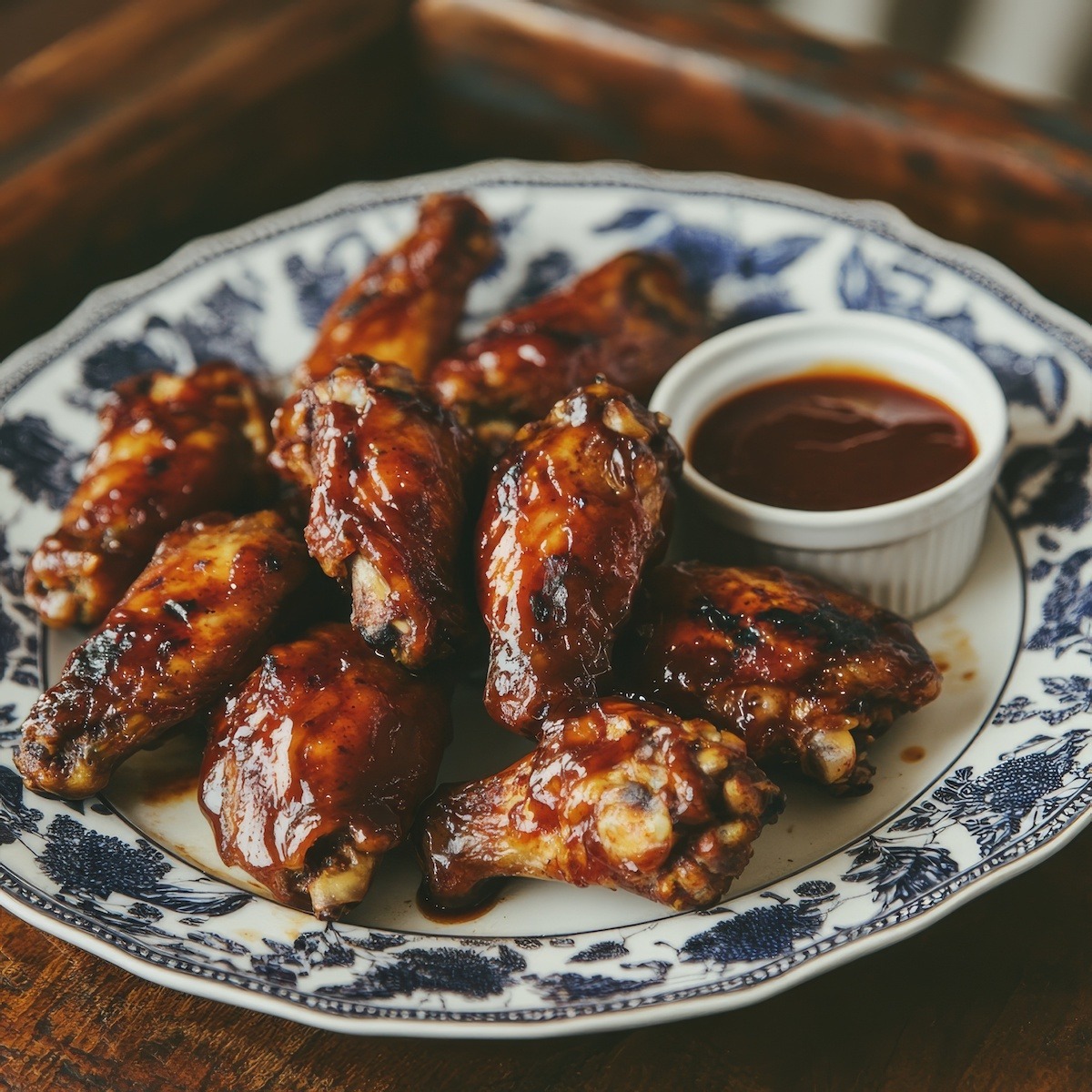

Title
Air fryer chicken wings have taken the internet by storm, becoming a go-to snack for food lovers everywhere. What makes them so popular? The air fryer offers the perfect solution for crispy, flavorful wings without deep-frying. With minimal oil, these wings come out golden and crunchy on the outside while staying juicy on the inside—a combination that’s hard to resist.
Social media platforms have exploded with creative recipes, showing how versatile air-fried wings can be. From classic buffalo to honey garlic and even international flavors like Korean BBQ, home cooks have turned this humble dish into a culinary playground. The convenience of the air fryer allows anyone, regardless of cooking experience, to whip up restaurant-quality wings in the comfort of their own kitchen.
The beauty of air fryer chicken wings lies not just in their taste but in how easy they are to make. With just a few ingredients and a quick cooking time, these wings are perfect for busy weeknights, game days, or spontaneous get-togethers. No wonder they’ve become an internet sensation—delicious, simple, and endlessly customizable, air fryer chicken wings are here to stay.
What So Special About Them?
Chicken wings prepared in an air fryer are special for several reasons:
- Crispy Texture Without Deep Frying: Air fryers use rapid air circulation to create a crispy exterior without needing deep frying. This results in golden and crunchy wings on the outside while remaining juicy on the inside, all with far less oil.
- Healthier Option: Air fryers require only a tiny amount of oil (sometimes none), so air-fried wings are a healthier alternative to traditional fried wings. You get that same satisfying crunch with fewer calories and less fat.
- Convenience and Speed: Air fryers cook wings faster than an oven, so preheating the oil like deep frying is unnecessary. Crispy, delicious wings can be ready in under 30 minutes, making them a quick meal or snack option.
- Versatility: The air fryer makes experimenting with different flavors and seasonings easy. Whether you prefer classic buffalo, tangy BBQ, or spicy Asian-inspired wings, the air fryer delivers consistent, mouthwatering results with any recipe.
- Less Mess: Air frying eliminates the greasy mess of deep frying, making cleanup much easier.
Taste Compared to Deep Fried and Roasted Chicken Wings
Air-fried chicken wings offer a unique balance between the texture of deep-fried and roasted wings. Here’s how they compare in taste and texture:
Taste:
- Air-Fried: The flavor of air-fried wings is similar to deep-fried wings but tends to taste a bit lighter. Since less oil is used, the seasoning and natural chicken flavor are more prominent. This can make air-fried wings taste fresher and have a less greasy finish.
- Deep-Fried: Deep-fried wings have a rich, indulgent taste because they are cooked in oil. The oil enhances the flavor, often creating a more savory and satisfying experience, though it can also mask some of the seasoning and chicken flavor.
- Roasted wings tend to have a deeper, more developed flavor because of the slow caramelization in the oven. The flavor is richer and more intense, often with a roasted, almost smoky undertone.
Texture:
- Air-Fried: Air fryers create a crispy, crackly skin similar to deep-fried wings but with a lighter crunch. The interior stays juicy, though the texture may be slightly less airy than deep-fried wings.
- Deep-Fried: Deep-fried wings are known for their ultra-crispy, crunchy skin with an almost shattering texture. The inside remains moist, but the oil frying process adds richness to the overall texture.
- Roasted: Roasted wings tend to have chewier, crisp skin and a meatier texture. They don’t achieve the same level of crispiness as air-fried or deep-fried wings, but they offer a more substantial, hearty bite.
Air-fried wings balance the indulgence of deep-frying and the wholesome roasting quality, offering crispiness with less oil and mess.
Anatomy of a Chicken Wing
A chicken wing is made up of three main parts, each with its characteristics and uses in cooking:
- Drumette:
- The drumette is the meatiest part of the wing and resembles a small drumstick, hence the name. It is attached to the chicken’s body and has one prominent bone running through it. The drumette mixes white and dark meat, making it flavorful and juicy. Because of its size and shape, it’s easy to hold and is often a favorite for dipping in sauces.
- Wingette (Flat or Mid-Joint):
- The wingette, or flat, is the middle section of the wing. It has two parallel bones with tender meat in between. The wingette is known for its slightly chewier texture and is popular among wing enthusiasts for its balance of meat and skin. This part is often favored for its even ratio of crisp skin to juicy meat.
- Wing Tip (Flapper):
- The wing tip, or flapper, is the pointed end of the wing. It has very little meat, mostly skin and cartilage. While some people enjoy eating the wing tip for its crispy texture, it’s often removed before cooking. However, it can also add flavor to stocks and broths.
Together, these parts form the complete chicken wing, but many recipes use only the drumette and wingette for easier handling and eating.
I Like to Separate the Parts Before Air Frying
Whether or not to separate the three parts of a chicken wing (drumette, wingette, and wing tip) into individual pieces depends on your cooking method, presentation preference, and the recipe you’re following. Here’s a guide to help you decide:
Reasons to Separate:
- Cooking Evenly: Separating the parts ensures that each piece cooks evenly. The drumette, wingette, and wing tip have different amounts of meat and fat, so leaving them whole can result in uneven cooking (e.g., the drumette may take longer than the wingette).
- Easier Eating: Separating the pieces, especially removing the wing tip, makes the wings easier to handle and eat. Drumettes and wingettes are the most popular parts for serving, as they are easier to dip in sauces and eat in a single bite.
- Crispier Texture: If you aim for maximum crispiness, separating the pieces exposes more surface area to heat, resulting in a crunchier texture. This is particularly useful for air frying or deep frying.
- Presentation: Serving individual pieces, particularly drumettes and wingettes, gives a more uniform and visually appealing presentation, especially for parties, game day snacks, or appetizers.
When to Leave Them Whole:
- Roasting or Grilling: If you’re roasting or grilling the wings, you can leave them whole. Cooking them this way can enhance the flavors by keeping the meat juicy and allowing for a more rustic presentation.
- Flavorful Stocks and Soups: When making soups, stocks, or broths, leaving the wing tip attached can add flavor. The wing tip is rich in collagen, which adds body to broths.
It’s common to separate the wings into individual pieces, especially for air frying or frying. You can choose to grill or roast based on your preference for appearance and eating convenience.

📖 Recipe
Air Fryer Chicken Wings
How to prepare chicken wings in your air fryer
Servings: 6 people
Ingredients
- 2 pounds chicken wings separated into drumettes and wingettes
- 1 tablespoon olive oil
- 1 teaspoon garlic powder
- 1 teaspoon onion powder
- 1 teaspoon smoked paprika
- 1 teaspoon salt
- ½ teaspoon black pepper
- 1 teaspoon baking powder for extra crispiness
- dipping sauce optional e.g. buffalo, BBQ, honey garlic
Instructions
Prep the Wings
Start by patting the chicken wings dry with paper towels. This step is crucial for achieving crispy skin, as excess moisture can lead to sogginess.
Place the wings in a large bowl and drizzle with olive oil. Toss to coat. The olive oil will help the seasonings stick to the wings and promote even browning.
Season the Wings
Mix the garlic powder, onion powder, smoked paprika, salt, pepper, and baking powder in a small bowl. The baking powder is a secret weapon for achieving extra-crispy skin, as it helps draw moisture away from the wings during cooking.
Sprinkle the seasoning mixture evenly over the wings, ensuring each piece is well coated. Toss the wings to distribute the seasonings evenly.
Preheat the Air Fryer
Air Fry the Wings
Arrange the wings in a single layer in the air fryer basket. Avoid overcrowding, as this can prevent the wings from crisping up properly. Depending on the size of your air fryer, you may need to cook the wings in batches.
Cook the wings at 400°F (200°C) for 10 minutes. After 10 minutes, flip the wings over using tongs and cook for an additional 8-10 minutes or until the wings are golden brown and crispy.
Tip: If you like your wings extra crispy, you can air fry them for an additional 2-3 minutes.
Toss in Sauce (Optional)
Once the wings are done, toss them in your favorite sauce, such as buffalo, BBQ, or honey garlic. If you prefer your wings dry, enjoy them as-is or with a dipping sauce on the side.
Serve and Enjoy
Serve the wings hot, garnished with chopped parsley or green onions if desired. Pair them with classic sides like celery sticks, carrot sticks, and ranch or blue cheese dressing.
Notes
Adjust Seasoning: You can adjust the seasoning to your taste. For extra heat, add a pinch of cayenne pepper or chili powder.
These air fryer chicken wings will impress with their crispy exterior and juicy interior. Perfect for game day, parties, or a quick dinner, they’re simple to make and easily customized with your favorite flavors. Enjoy!
Some of My Favorite Chicken Recipes
 Print
Print




